I have been trying to plot a line plot with ggplot.
My data looks something like this:
I04 F04 I05 F05 I06 F06
CAT 3 12 2 6 6 20
DOG 0 0 0 0 0 0
BIEBER 1 0 0 1 0 0
and can be found here.
Basically, we have a certain number of CATs (or other creatures) initially in a year (this is I04), and a certain number of CATs at the end of the year (this is F04). This goes on for some time.
I can plot something like this fairly simply using the code below, and get this:

This is fantastic, but doesn't work very well for me. After all, I have these staring and ending inventory for each year. So I am interested in seeing how the initial values (I04, I05, I06) change over time. So, for each animal, I would like to create two different lines, one for initial quantity and one for final quantity (F01, F05, F06). This seems to me like now I have to consider two factors.
This is really difficult given the way my data is set up. I'm not sure how to tell ggplot that all the I prefixed years are one factor, and all the F prefixed years are another factor. When the dataframe gets melted, it's too late. I'm not sure how to control this situation.
Any advice on how I can separate these values or perhaps another, better way to tackle this situation?
Here is the code I have:
library(ggplot2)
library(reshape2)
DF <- read.csv("mydata.csv", stringsAsFactors=FALSE)
## cleaning up, converting factors to numeric, etc
text_names <- data.frame(as.character(DF$animals))
names(text_names) <- c("animals")
numeric_cols <- DF[, -c(1)]
numeric_cols <- sapply(numeric_cols, as.numeric)
plot_me <- data.frame(cbind(text_names, numeric_cols))
plot_me$animals <- as.factor(plot_me$animals)
meltedDF <- melt(plot_me)
p <- ggplot()
p <- p + geom_line(aes(seq(1:36), meltedDF$value, group=meltedDF$animals, color=meltedDF$animals))
p



